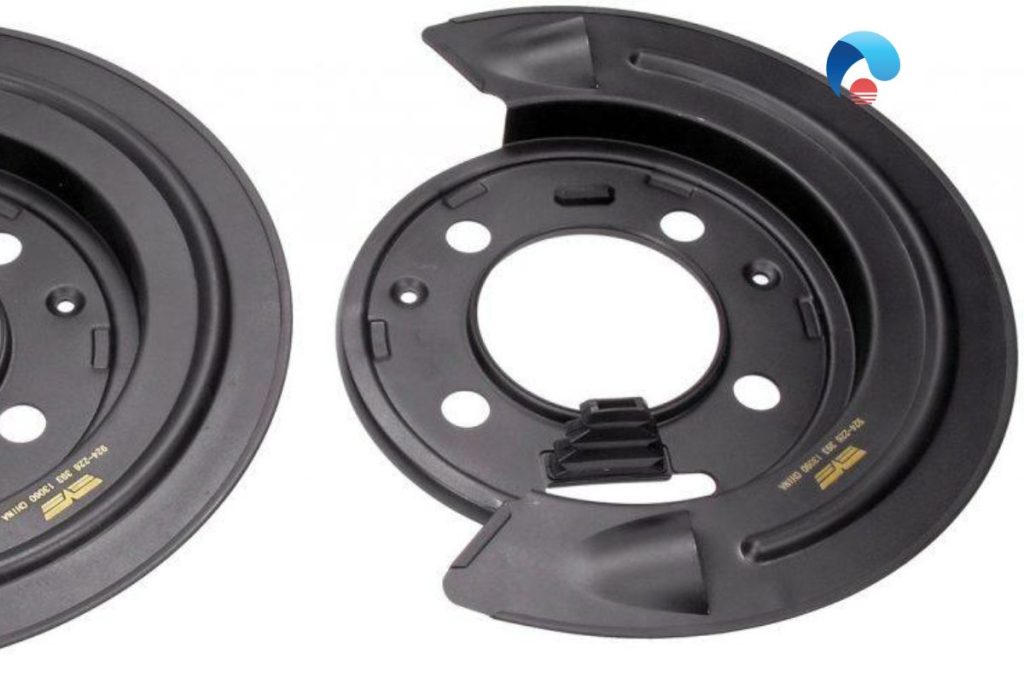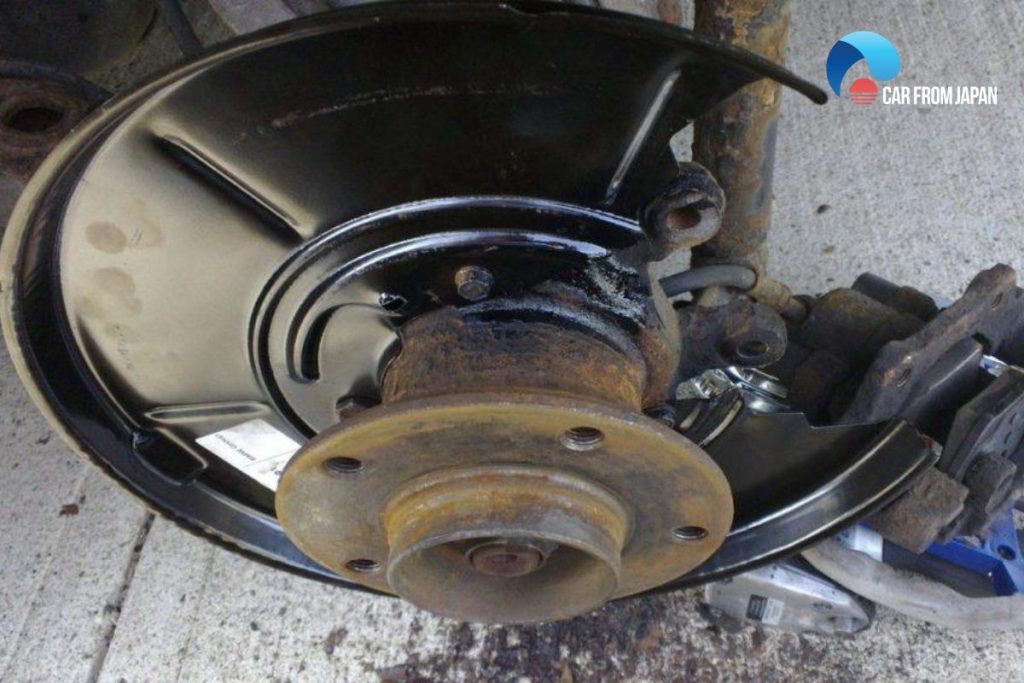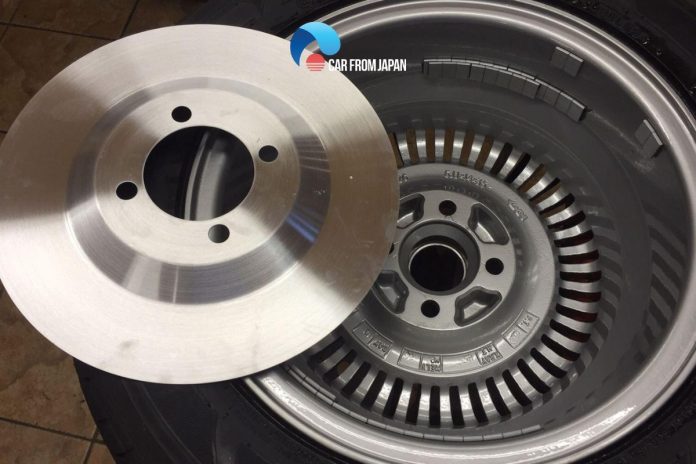Brake dust shields are normally aluminum plates sandwiching between the rim and your brake disc. Their primary duty is catching all the debris and dust blown from the brake disc and preventing it from setting on your rims.
However, someone said that brake dust shield removal can save the brake components and augment the lifespan, is it true?
Contents
Are Brake Dust Shields Necessary?
Brake dust shields, also known as brake disc shields or backing plates, are thin pieces of metal (typically steel or aluminum) positioned behind the brake rotors or drums
Using this brake shields will prevent dust accumulation from your car and also cut down on the manual cleaning. Whereas they can obviously help prolong the life of brake components, are they absolutely necessary?
Increase brake system lifespan
A braking system without a dust shield for brakes is prone to grime and dust buildup. And, it may lead to difficult maintenance and brake malfunction, leading to severe safety threats.
The majority of brake issues caused by premature component wear are brought on by high friction during routine operation, whether it be dust from the brake pads, dirt from the road, or other debris.
The accumulation of brake dust on these vital components is exacerbated when the brake dust cover is removed. Thus, when brake pads are placed to the rotor, there is more friction present, increasing wear on both the brake pads and the rotor.
Maintaining the brake dust guard in place helps increase the lifespan of the braking calipers, rotors, and pads.

See More: 4 Simple Ways To Make Brakes Last Longer
Protect brake in winter
Driving on snowy roads could have a degrading impact on your car, and the braking system in particular. In order to work properly, the braking system must operate smoothly.
Brake dust shield removal means your car’s braking system is exposed to the risk of being flooded by mud or salt.
Both of these corrosives can harm an automotive braking system. And that means an increasing risk of brake malfunction and safety issues.
Moreover, when your brakes are beyond the normal heat level, a sudden splash of snow or icy water may cause the brake rotor to crack or warp.
Reduce road grime build-up
The brake dust shield is designed by the designers of contemporary vehicles, trucks, and SUVs to prevent the accumulation of pollutants such as road filth, grit, and other particles that can gather on braking system elements.
Ensure safety in wet conditions
For some, brake dust shields help to deflect water splashed up from the road away from the brake rotors.
While they aren’t primarily “water shields,” they can offer some protection against sudden cooling of hot rotors, which in extreme cases, could lead to warping or cracking.
Additionally, keeping excessive water off the rotors can help maintain more consistent braking performance in wet conditions.
Should We Remove Brake Dust Shields?
Actually, it doesn’t have any impact on your car’s braking system. Neither the braking systems cooling nor its overheating are affected.
In other words, brake disc dust shield don’t interfere with a car’s performance, but they have an aesthetic aspect. Therefore, it is suggested to have the shields on your wheels.

However, if you are driving in a mile, dry and clean weather, a brake dust shield removal should not be that bad. It also will not cut short the normal lifespan.
But during extreme weather, you can’t expect the same. So, unless it is badly required, brake dust shield removal is not a good idea at all.
Here are the summarized pros and cons for removing brake dust shield for your reference.
Pros
- Improve brake cooling: Better airflow around the rotors
- Easier access for maintenance
- Visual appeal
Cons
- Trapping heat: In high-performance driving situations, the shields can trap heat around the rotors, leading to brake fade.
- Weight: Though minimal, they do add a small amount of unsprung weight.
- Increased debris contamination
- Impact on ABS/Stability Control Systems
How Often Should You Replace The Brake Dust Shields?
Every 30,000 miles or more, rim dust shields should be changed since they eventually wear out and lose their usefulness.
This is especially true if you often travel on muddy trails or off-road; these rougher terrains will create greater quantities of dirt and debris, which can harm your brakes more rapidly than usual.
When changing the shields, take in mind that depending on whether your automobile has four-wheel drive capability, you might need to use a different kind (this information should be included in the owner’s handbook).
If so, be sure to make the appropriate purchases!
If at all feasible, consider purchasing two sets: one for routine use and one for special occasions, such as off-roading excursions into difficult terrain or locations with a lot of mud or dirt.
FAQs on Brake Dust Shields
How to clean the brake dust shields?
You can follow these simple steps to clean the brake dust shields:
– On both sides of the brake dust shield, degrease using the cleaner.
– Use a brush and/or a towel to clean the brake dust shield on both sides.
– Dry with a fresh cloth after rinsing with water and a cloth.
– You may also paint on glossy black paint or wax to help against future rust for a complete cleaning.
What happens if you don’t change your brake dust shields?
Your car dust shield won’t be able to adequately protect your brakes if you don’t repair them when they are damaged.
Bring your car to a mechanic and have them look at it if you’re not sure whether it need to be serviced or replaced.
Is a backing plate the same as a dust shield?
‘Backing plates’ is another name for dust covers or splash guards on disc braking systems.
These pieces hide suspension parts from water and brake dust, preventing corrosion.
What causes the brake dust shields noise when you turn your car?
The brake rotor is being scraped by the rock or debris while the brake rotor rotates with the wheel, which causes the noise.
Performance is unaffected, but you should get rid of the rock or debris as soon as you can.
How to tell if your brake dust shield is broken?
A scraping sound might be heard if a damaged dust shield makes contact with the rotor. If the dust shield is bent, it could potentially come into contact with the rotor.
Check out this video from shootingstar1015 to see more of his views on the Brake Dust Shield and whether it is really needed!
Final Words
In the end, while it may be tempting to remove the rotor shield during brake pad replacement procedures, the hazards far exceed any potential advantages.
When doing routine servicing and maintenance, it is important to always replace all OEM parts, including the brake dust shields on any vehicle, truck, or SUV.




Thank you for yet another lesson. I keep following by link from your facebook page.
Looking forward to the next.